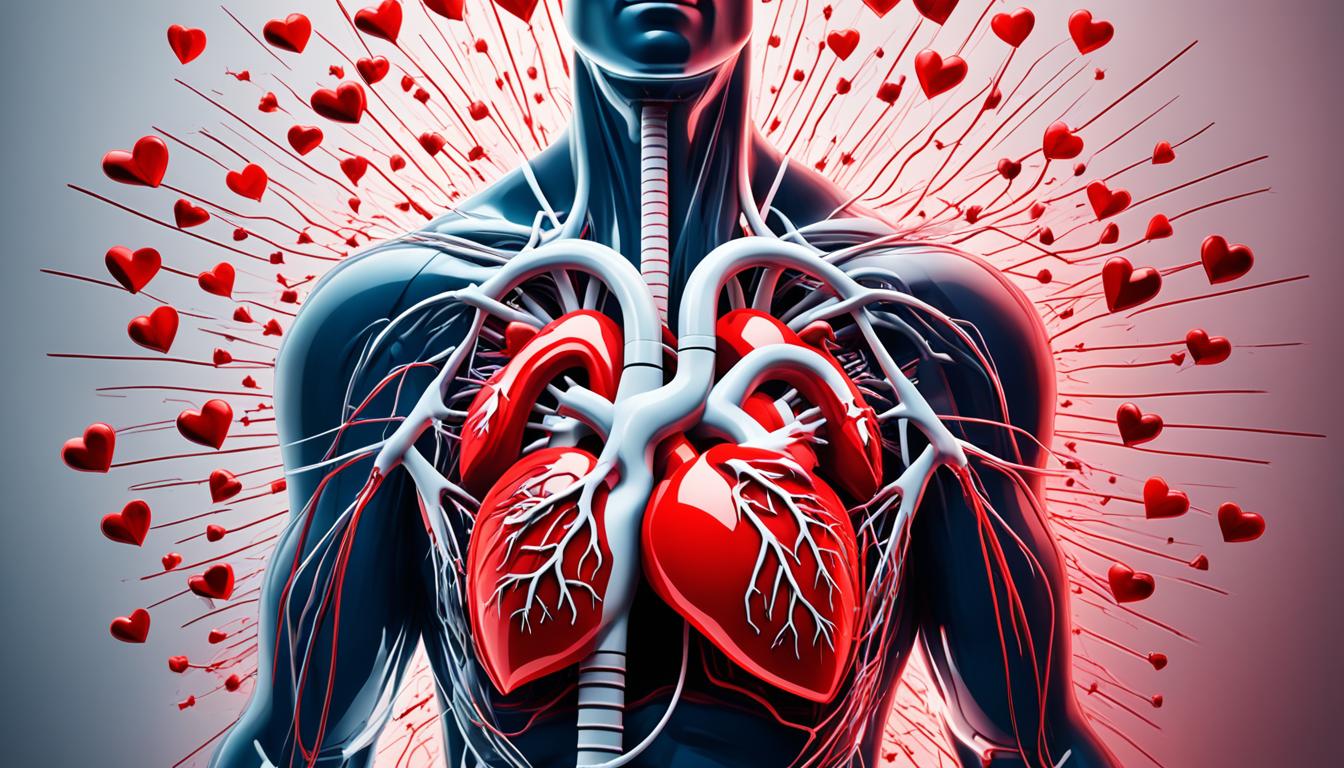Ischemic heart disease and congestive heart failure lead to many deaths. About 1.5 million heart attack cases happen yearly in the U.S.
Recently, stem cell therapy shows promise in treating heart problems. This approach aims to create new heart cells and boost heart function. We’re also looking into the risks it might pose for causing abnormal heart rhythms.
Key Takeaways:
- Rapid heartbeat disease includes ischemic heart disease and congestive heart failure, which are major health threats.
- About 1.5 million Americans suffer from a heart attack every year.
- Stem cell therapy shows hope by creating new heart cells and enhancing heart function.
- This review focuses on the sources of cells used in this therapy and the risks involved.
- Understanding the risks of abnormal heart rhythms is crucial for evaluating the safety and effectiveness of stem cell therapy.
Types of cells used for cardiac regenerative therapy
Stem cell therapy shows promise in treating heart diseases. It brings new hope to patients with heart failure and related illnesses. The choice of cell type is a crucial part of this therapy.
Two key cell types are used: pluripotent stem cells (PSCs) and adult stem and progenitor cells. Let’s explore these different cells and their roles in heart repair.
Pluripotent Stem Cells (PSCs)
- Embryonic Stem Cells (ESCs): These cells come from embryos. They can turn into any type of cell. This ability makes them very useful in treating heart issues.
- Induced-Pluripotent Stem Cells (iPSCs): iPSCs are made by turning adult cells back into a flexible state. Like ESCs, they can become many cell types, including heart cells.
Adult Stem and Progenitor Cells
- Mesenchymal Stem Cells (MSCs): MSCs are found in places like bone marrow. Though they can’t change into as many cell types, they help heal the heart by reducing inflammation.
- Cardiac Progenitor Cells (CPCs): CPCs are from the heart itself. They can become different heart cells, which is crucial for fixing heart damage.
- Skeletal Myoblasts (SkMs): These stem cells come from muscles. They can help the heart beat better by joining damaged heart tissue.
Another key cell type is human-induced pluripotent stem cells (hiPSCs). They are made from human fibroblasts and work like ESCs. HiPSCs have broad uses in healing the heart. But, they, along with hESC-CMs, raise concerns over heartbeat problems. It’s vital they join the host cells well and make the heart’s electrical system work smoothly.
Stem cell therapy aims to repair the heart with these cells. The specific cell chosen depends on its safety and how well it works in the body.
With more research, stem cell therapy using these cells has exciting prospects for heart disease treatment. The goal is to create therapies that are safe and help patients with heart rhythm issues and other heart problems.
Stem cell therapy for heart failure and ischemic heart diseases
Stem cell therapy is a new hope for those with heart issues like heart failure. It aims to make the heart’s muscle stronger and ease symptoms. Studies show that 87% of patients have seen their symptoms get better with this therapy.
This treatment uses stem cells from the patient’s own body or from embryos. Doctors choose how many cells to use based on the patient’s age and size. Then, these stem cells are put into the patient’s body through a vein.
One big plus of this therapy is how it could be a new way to treat heart problems without regular drugs or surgery. Stem cells have the power to fix damaged heart tissue. This can make the heart work better and help patients live a better life.
Stem cell research is moving forward all the time. This means there’s hope for many more people with heart issues. Stem cell therapy might just be the key to a healthier heart for many worldwide.

